Viburnum ordinary: description, cultivation and reproduction

Viburnum is a well-known plant that does not require special care and is very attractive during flowering and ripening of fruits. Many gardeners consider it necessary to have at least one viburnum bush on their site.
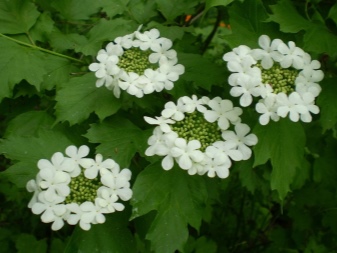
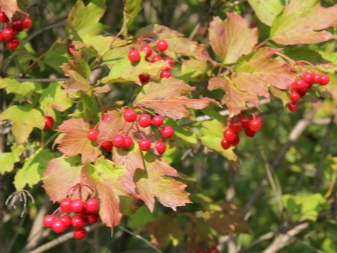
Botanical description
Viburnum ordinary (lat.Vibúrnum ópulus) is a fruit shrub or small tree of the Adoksov family. Translated from Latin, its name means "knit, weave." In ancient times, in European countries, the branches of the bush were used for weaving. In the Old Slavic interpretation, the word "viburnum" indicates a deep red color of the fruit.
The plant prefers open, sunny areas, although generally unpretentious. Easily tolerates changes in weather conditions, including sudden changes in temperature. In natural conditions, it grows almost everywhere: in the steppes, in sparse forests, where there are open areas, on the banks of water bodies.
The shrub reaches a height of 1 to 4.5 m. The bark has a gray-brown tint. In most species, small longitudinal cracks are present on it.
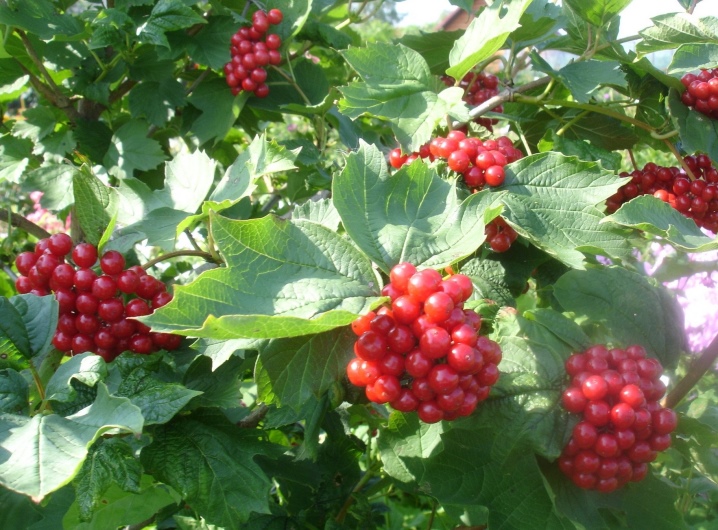
Viburnum leaves are medium in size, approximately the same in length and width - 6-10 cm. Their shape is interesting - they can be whole, with stipules or 3-5 lobed. The top side is dark green and the bottom is gray-green. In autumn, the color of the leaves varies from orange to purple.
During the flowering period, the bush looks very decorative. It blooms in May-June with beautiful white inflorescences, collected in flat shields with a diameter of 2-12 cm.
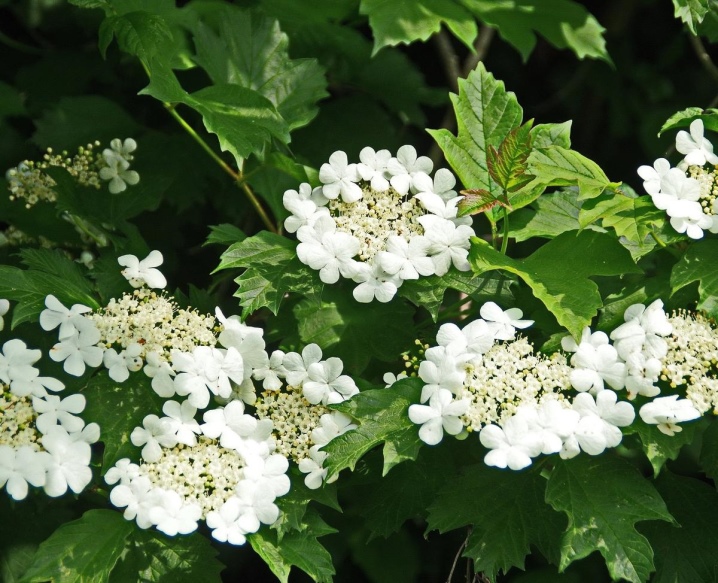
Fruits are edible red drupes, oval or round, about 6-10 mm in diameter. Ripen in late August - September. Taste depends on the variety, but all have a characteristic bitterness. When harvesting at a later time (at sub-zero temperatures), the bitter taste becomes less. Berries are valued not for their taste, but for their good vitamin composition.
In a garden, viburnum is grown as an ornamental and medicinal plant. For medicinal purposes, all parts of the plant (decoctions and infusions of bark, leaves, berries) are successfully used, which help to cope with various ailments.
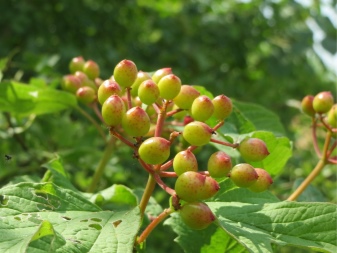

Varieties
Viburnum vulgaris is represented by a large variety of species.
- Compactum An unpretentious species, it grows on any soil, but in the first years its growth is slowed down. Reaches a height of 1.5-2 m. Differs in a compact round crown. The leaves are three-lobed, in autumn they acquire a bright purple hue. The bush blooms for 4-5 years of life. Blooms profusely in June. The flowers are white or pale beige. Fruits are numerous, about 1 cm in diameter, collected in bunches. They ripen at the end of August and can hang on the bushes all winter.
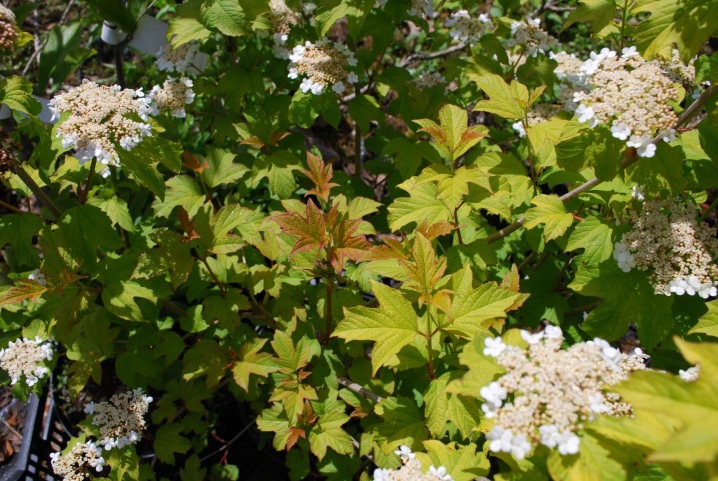
- Xanthocarpum (Xanthocarpum). It grows up to 2-3 m, the crown is oval in the first years, over time the branches grow in width and the bush acquires a rounded shape. The leaves are three-lobed, with jagged edges, in comparison with other species, they have a lighter color. The species can grow in shaded areas, but flowering will be weaker. White flowers bloom at the end of May. Ripe fruits have a shiny yellow-orange shade.

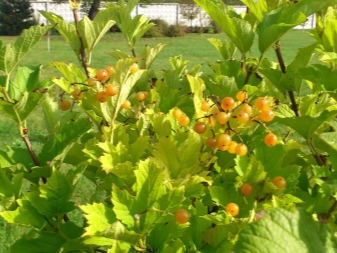
- Nanum (Nanum). Refers to decorative dwarf species, in height does not exceed 1 m. The crown is dense, hemispherical type. The leaves are small, three-lobed, dark green, and at the top of the bush their color is reddish. It blooms rarely, very few inflorescences are formed.This type is often used for landscaping recreation areas, city yards, small squares.
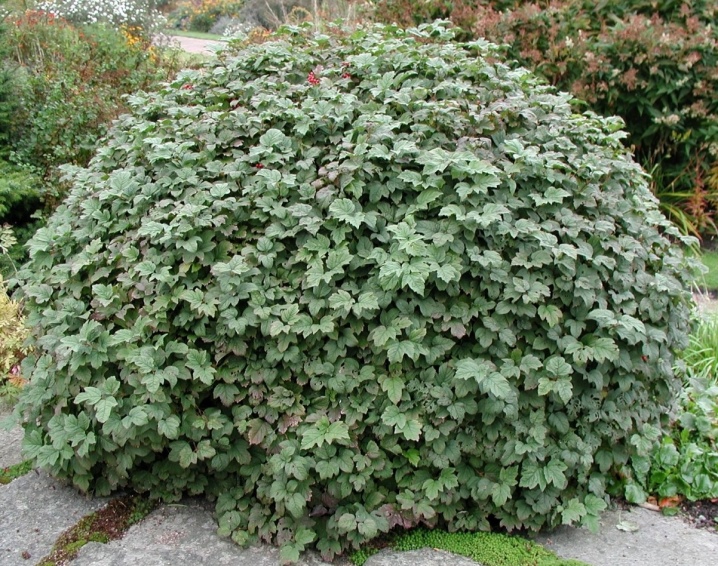
- Roseum (Roseum). A very beautiful view with increased decorative effect. The bush can grow up to 4 m. The crown needs pruning and pinching of young shoots to increase the number of inflorescences. During the flowering period, the variety is striking in its magnificence - large inflorescences of a snow-white shade resemble a rose. Often used in landscape design, it looks spectacular in group and single plantings.
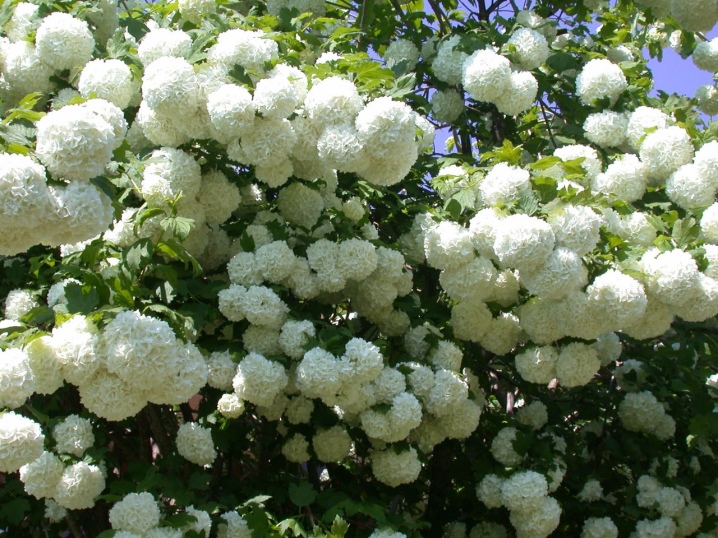
In the conditions of the middle zone and the northern regions of Russia, varieties bred by the N.N. M. A. Lisavenko.
- "Zarnitsa". Unpretentious winter-hardy variety. In appearance it looks more like a tree, as it forms only 5 skeletal branches and rare growth. The fruits are not very large, light red in color. Average yield - about 4 kg of berries from a bush.
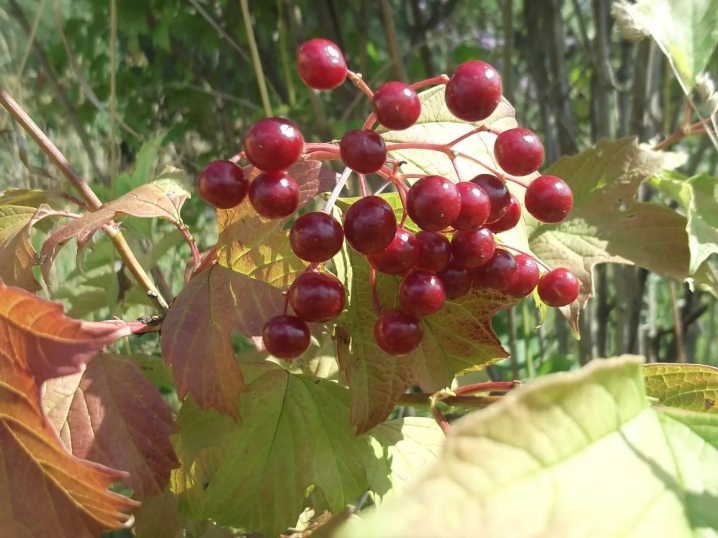
- "Taiga Rubies". Fruiting variety. The bush reaches medium size, its height does not exceed 3 m. The bark is smooth, gray in color. The variety has a high frost resistance and, less often than others, is prone to damage by pests and diseases. Ripe fruits are dark ruby color. The yield is very high. From an adult bush, you can collect 8-10 kg of vitamin berries.

- Shukshinskaya. A hardy variety with regular fruiting. It grows up to 3.5 m. It is not afraid of frost. The berries are bright red spherical in shape, have a more pleasant taste, since they contain a higher percentage of sucrose, so the bitterness in them is less pronounced. From one adult bush, you can get 6-8 kg of fruit.
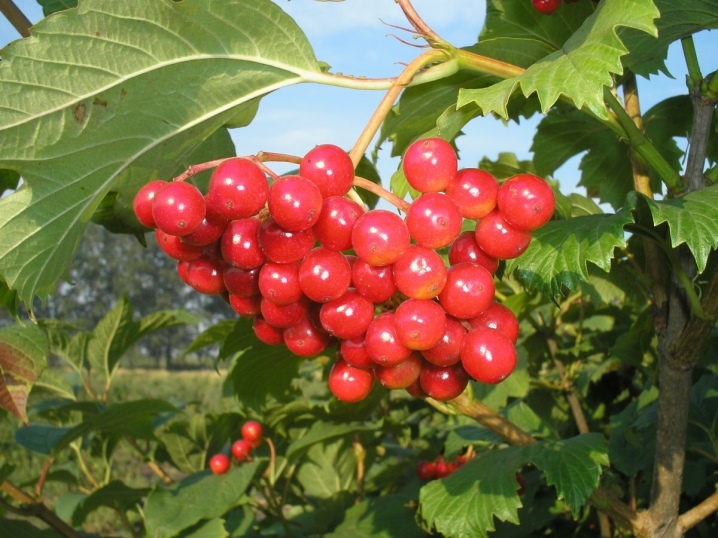
Landing
Kalina is distinguished by its unpretentiousness, but for abundant flowering and fruiting, it is recommended to plant it in lighted places. Grows well on neutral or slightly acidic soil. Soils with a high content of peat and sand are less preferable for it.
It is permissible to plant a shrub in spring and autumn.

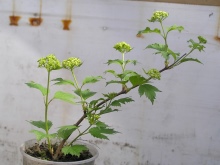
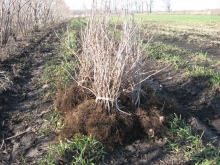
Landing rules.
- The selected place should be dug up 2 weeks before planting and phosphorus-potassium fertilizers added.
- Before planting, dig the planting holes about 50-60 cm in width and depth. When planting several specimens, the distance between them should be about 3 meters, for dwarf decorative varieties - 2 m.
- Add humus, 3-4 handfuls of ash, 2-3 tablespoons of urea to the pits and mix.
- Place the seedlings in the middle of the hole, deepen the roots by 4-5 cm and sprinkle with earth.
- Arrange a near-stem hole around the seedling and water abundantly. From above, it is advisable to mulch the soil with sawdust or peat.
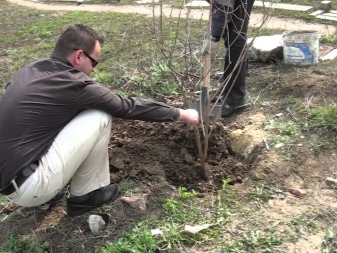
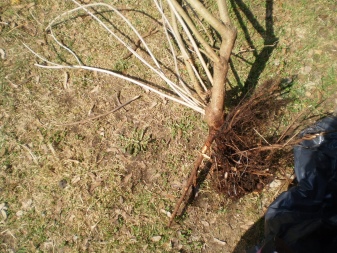
Follow-up care
The cultivation of this culture is not particularly difficult. It can live for over 60 years, but in the early years it grows slowly and does not bloom. The first flowering and appearance of fruits occurs not earlier than 2 years after planting. The viburnum planted in the fall takes root better.
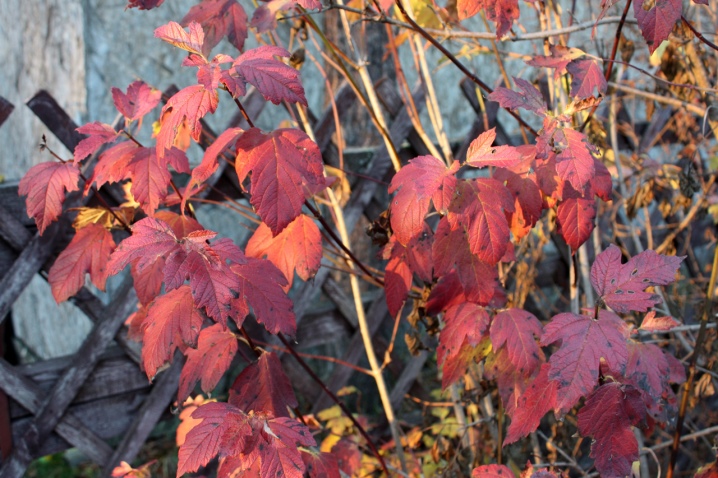
Watering
Young seedlings should be watered once a week in the evening to help the moisture evaporate more slowly. Adult shrubs do not need frequent watering, they should be watered as the soil dries up in the amount of 1 bucket per bush. In the absence of rain during the flowering period, you can water the bushes abundantly 2-3 times a week.


Top dressing
In early spring, before the leaves appear, viburnum needs to be fed with complex fertilizer - 50 grams, or urea - 1-2 tablespoons for each bush. Before applying top dressing, remove all mulch and apply fertilizer around the trunk. Then loosen the soil and water it. After the bush can be mulched again.
On the eve of flowering, it is advisable to fertilize the viburnum with ash or potassium sulfide in the amount of 2 tablespoons per bush. With the onset of autumn, you need to feed with superphosphate - 50 grams, or ash - 3 handfuls per bush.
In hot and dry summers, it is better to dissolve mineral fertilizers in water (dilute the required amount in 7-10 liters).
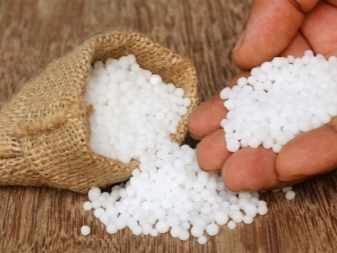
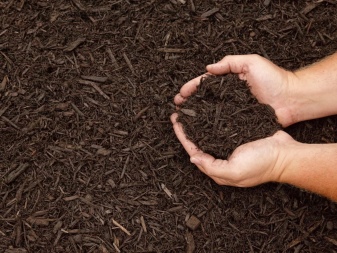
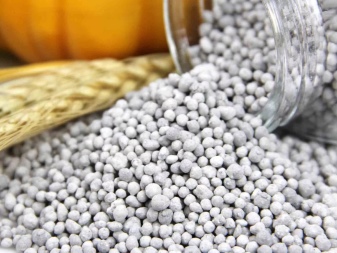
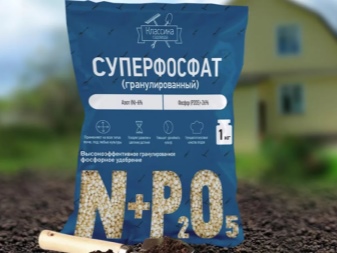
Pruning
This procedure is best done in the spring, before the growing season.The pruner carefully removes dried branches and deformed shoots growing inward. Also, this procedure increases the circulation of fresh air for the bush. Ornamental varieties also need pruning to form a beautiful crown.
After about 5 years, Kalina needs serious anti-aging pruning. Old shoots should be cut to 15-25 cm from the surface of the ground and left intact in ornamental varieties about 15 main branches, and in fruit-bearing ones - 7-9.
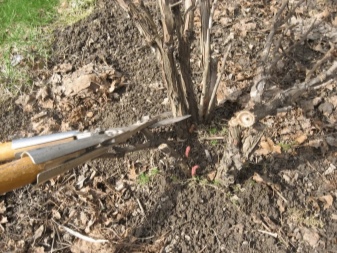

Disease and pest control
Viburnum is susceptible to powdery mildew and bacterial spotting. They can be recognized by the appearance on the leaves of white bloom (powdery mildew), yellow-brown spots or stripes with gradual drying and death of the leaves. If such deviations are found, you need to act immediately. The plant can be saved by removing infected shoots and treating all the bushes with Bordeaux mixture or copper sulfate.
Of the pests, the greatest harm to viburnum can be caused by aphids and viburnum leaf beetle.

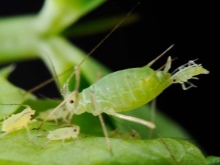

To eliminate aphids, you can spray the leaves of the plant with a weak soapy solution or a solution of ammonia (dissolve 1 tablespoon of the drug in a 10 liter bucket of water). The use of insecticides "Akarin" and "Intavir" is very effective.
Viburnum leaf beetle is the most dangerous pest of viburnum. He lays eggs in young shoots of viburnum. The larvae emerge from the eggs in late spring and begin to eat the leaves. In the fight against this insect, prevention is first of all important. It includes the timely destruction of dry branches, as well as the treatment of bushes in spring and autumn with insecticidal preparations "Aktellik", "Kemifos", "Lightning". With the massive appearance of larvae and adult beetles, it is necessary to treat the bushes with the same drugs as soon as possible.
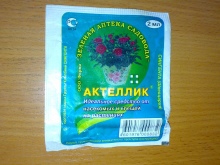
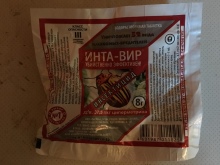

Preparing for winter
All varieties of viburnum ordinary are unpretentious and do not need special preparation for the winter. With the onset of cold weather, a layer of humus should be poured under each bush to protect the roots from hypothermia. In addition, its introduction contributes to the improvement of the composition and structure of the soil.
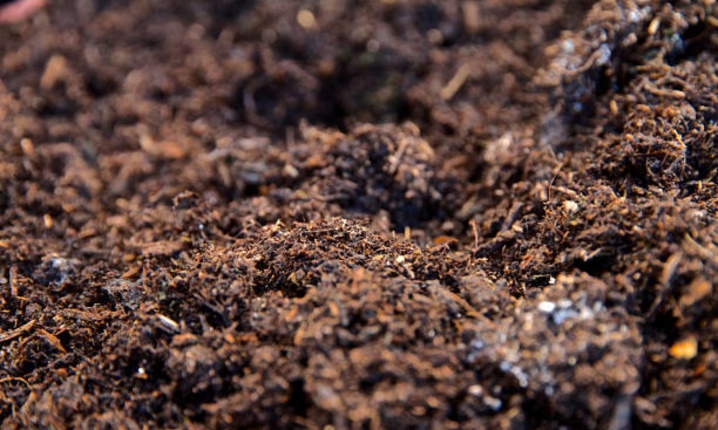
How to propagate?
For reproduction of viburnum in the garden, the following methods are used.
- Cuttings. More suitable for the propagation of decorative forms. To do this, during the period of active growth of shoots (in June), a strong shoot is chosen and cut into pieces 12-15 cm long so that a pair of leaves remains on top. In this case, the upper cut is made straight, and the lower one is oblique. It is very important that there are 2 or 3 internodes on each cut off part. The cuttings should be soaked for 8-10 hours in a growth stimulator - "Heteroauxin", "Epin", and then planted in the greenhouse at a distance of 7-10 cm from each other, burying them into the ground with the lower part by 1-2 cm. In September they are dug up and transplanted into open ground.
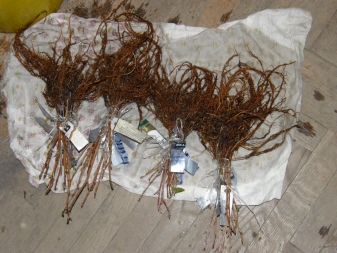

- Rooting by vertical layers. In autumn, around the end of September - beginning of October, bushes are chosen for breeding. The lower shoots are shortened to growths, on which 3-5 buds are formed, and the shoots are hilled at half their height. In the spring, new growths appear from these buds. When they reach a height of about 15 cm, re-hilling is carried out. By autumn, additional roots are formed on the shoots. The shoots separated from the mother plants are transplanted to a new bed and left there for the winter. With the onset of spring, they are transplanted to a permanent place.
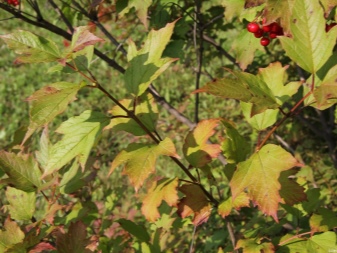
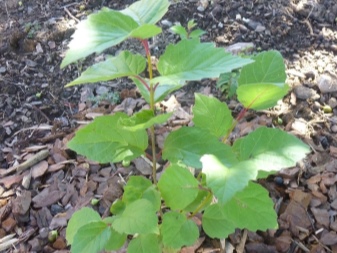
- Rooting with horizontal layers. Carried out in the spring. Long, even shoots are chosen, bent to the ground and pinned into the ground with wooden staples, and then watered abundantly. After a while, shoots growing upward appear from the buds, when their growth reaches 12-15 cm, the first hilling is performed. As the growth height increases, hilling is repeated several times over the summer.In the fall, the shoot is dug up, carefully separating it from the mother bush, divided into parts depending on the number of growths and transplanted to a new place.
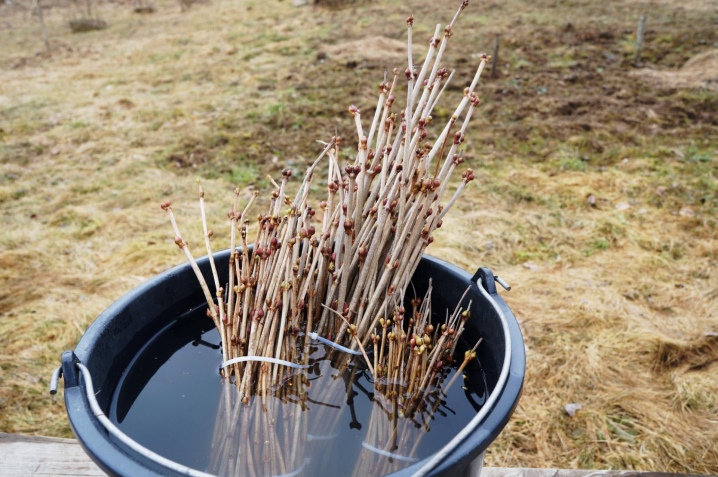
Plants propagated by vertical or horizontal layers begin to bear fruit after 2-3 years.
Application in landscape design
Viburnum is valued not only for its medicinal properties, but also for decorativeness, therefore it can often be found in landscape design. She looks great both in single fit and in group compositions.
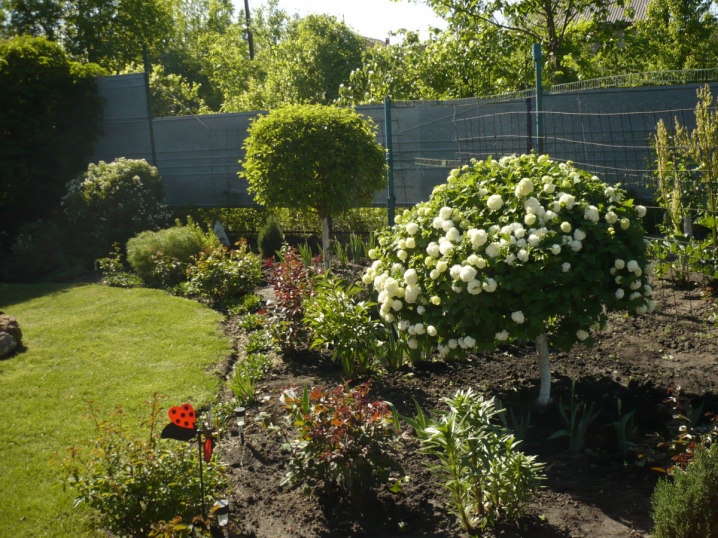
Often, viburnum plantings are used as a hedge or zoning in garden plots and adjacent territories. The dense crown will serve as reliable protection from wind and prying eyes. The height of the hedge can be adjusted by trimming the crown as needed.
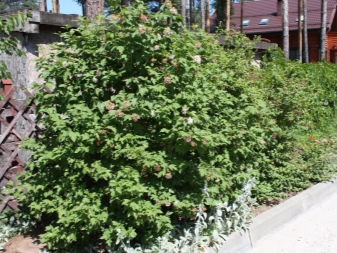
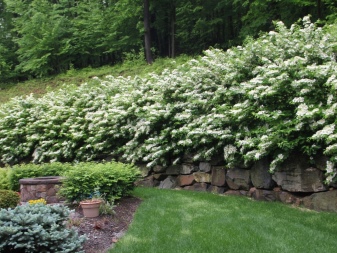
The shrub goes well with a variety of flowers and other shrubs. It will also look spectacular against the background of coniferous trees, which will emphasize its delicate flowering in spring and summer and add contrast when fruits appear.

If there is a recreation area with a gazebo or a playground on the site, planting from several bushes will give them comfort and allow you to create a small shadow, which is sometimes very necessary.
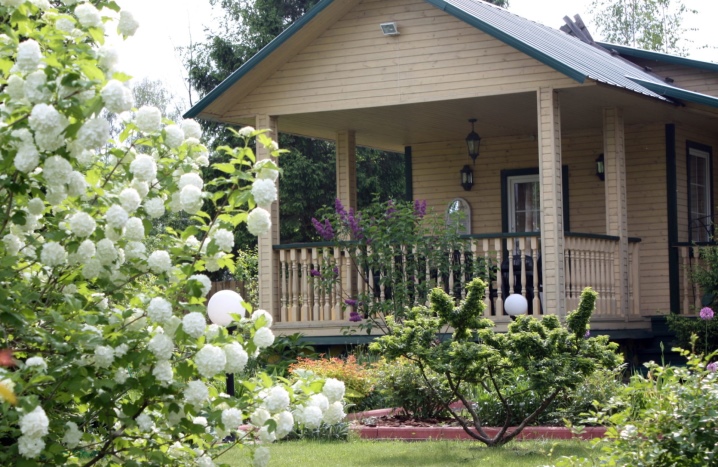
Viburnum gets along well next to many trees - it can be planted next to maple, spruce, mountain ash and birch.
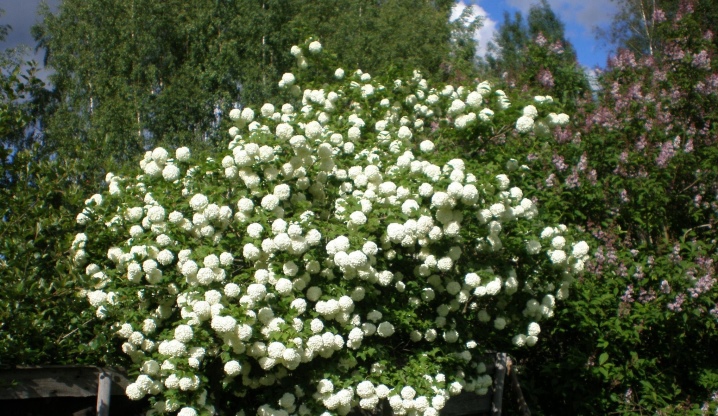
Decorative dwarf species Compactum and Nanum go well with any flower arrangements, they can be planted not only in open ground, but also in containers. They are well suited for decorating rock gardens.

Viburnum Roseum is ideal for planting in flower beds. Its snow-white globular inflorescences will be in amazing harmony with flowers of all sizes and shades.

Viburnum is a plant loved by many, it will decorate any place in the garden and will delight you with its flowering and abundance of high-vitamin berries.
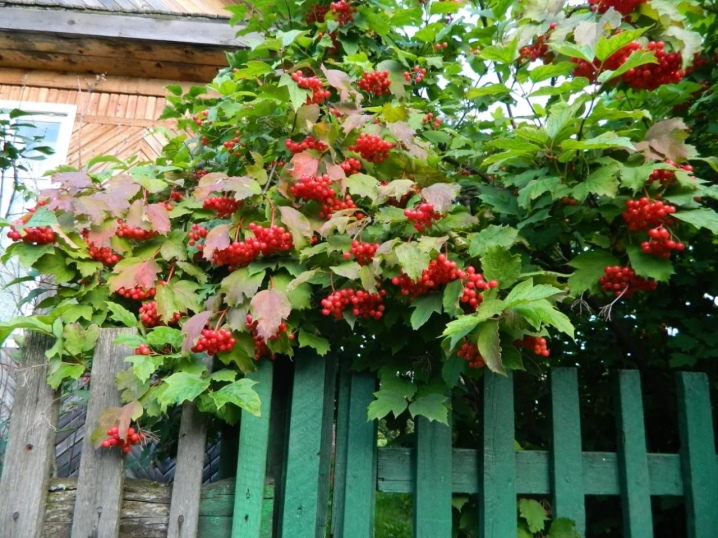
For the common viburnum, see below.



































































The comment was sent successfully.